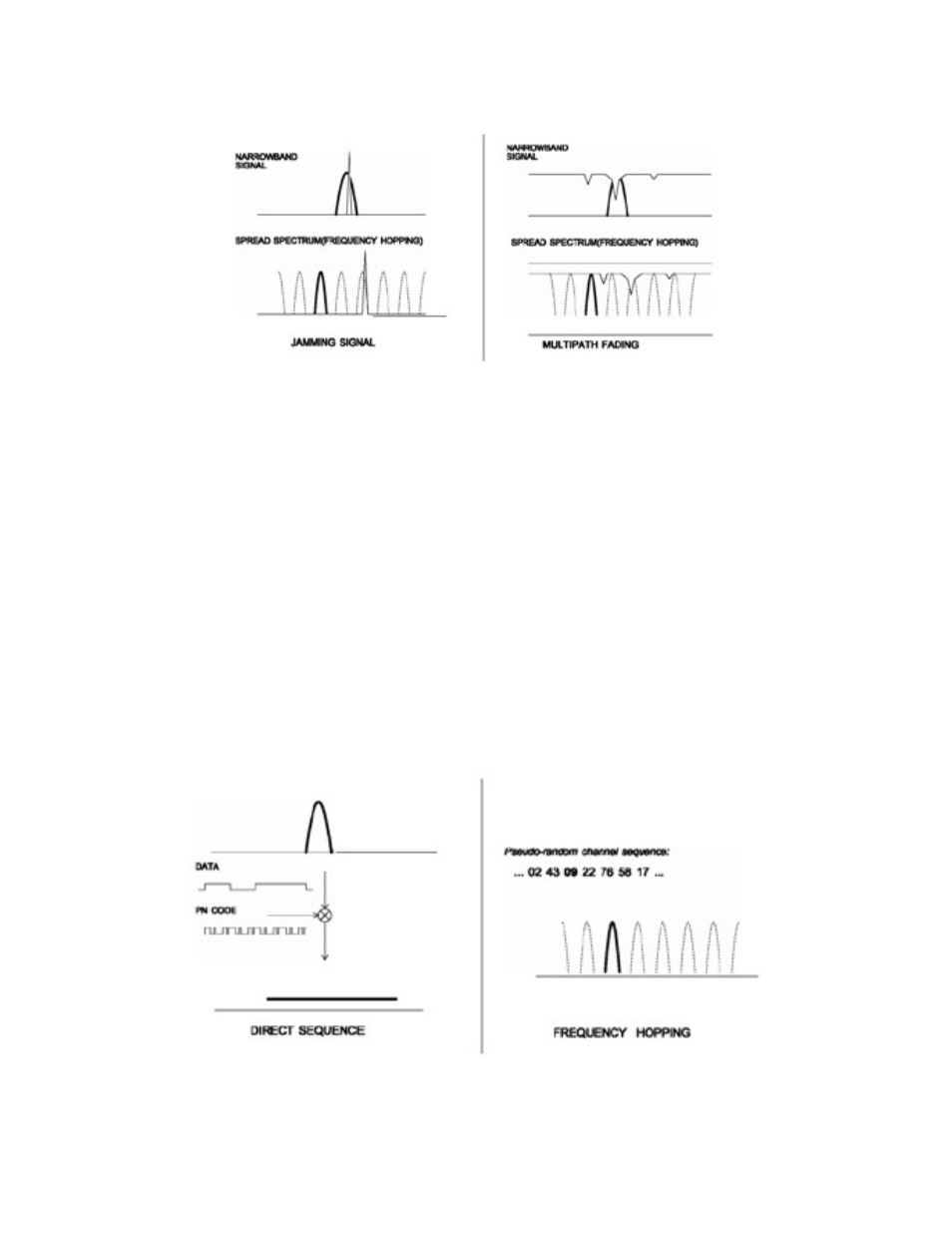RF Neulink NL900S User Manual
Page 6

NL900S USER MANUAL
6
Narrow-band versus spread-spectrum transmission
Figure 1.1.1
1.2
Frequency Hopping versus Direct Sequence
The two primary approaches to spread spectrum are direct sequence spread spectrum (DSSS)
and frequency hopping spread spectrum (FHSS), either of which can generally be adapted to a
given application. Direct sequence spread spectrum is produced by multiplying the transmitted data
stream by a much faster, noise-like repeating pattern. The ratio by which this modulating pattern
exceeds the bit rate of the base-band data is called the processing gain, and is equal to the
amount of rejection the system affords against narrow-band interference from multipath and
jammers. Transmitting the data signal as usual, but varying the carrier frequency rapidly according
to a pseudo-random pattern over a broad range of channels produces a frequency hopping
spectrum system.
Forms of spread spectrum - direct sequence and frequency hopping
Figure 1.1.2
